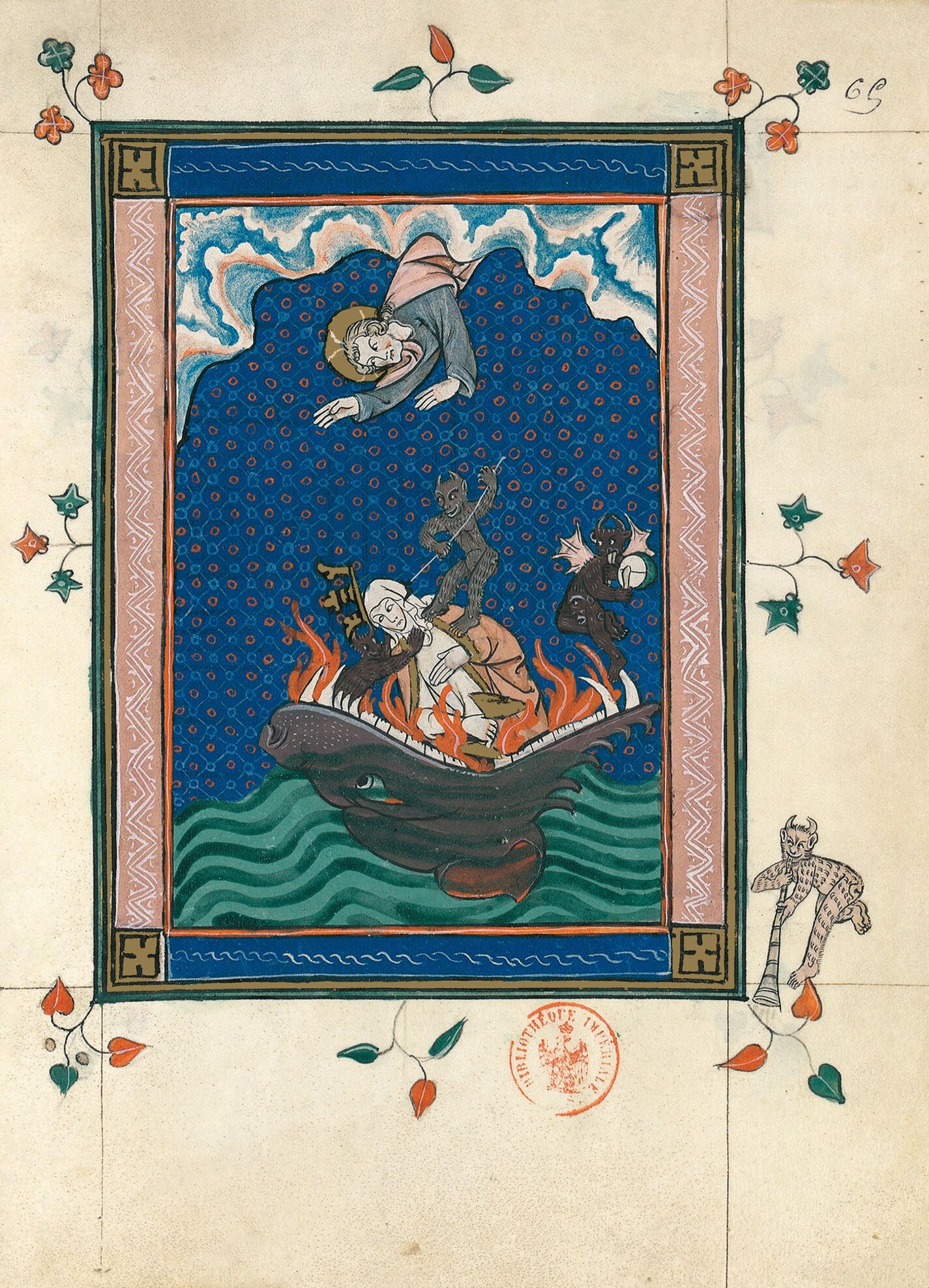The scene brings to a close the virtually uninterrupted sequence of eight paintings depicting the fall of the Great City, from its division into three parts (f. 53) up to its eternal condemnation (f. 65). The artist repeats the image alternating the forms of the town or the woman, sometimes slightly out of step with the text, in order to ensure the visual continuity of the narration and the simultaneity of the events. Consequently, the end of the lamentations of the merchants about the annihilation of the city that was a source of riches appears opposite their entrance into Hell portrayed earlier in the lower register on f. 62.
Christ emerges from the clouds, and upon his order the devils who had seized the deposed queen cast her into the mouth of Leviathan. The monster’s head floats like a hellish vessel upon the dark green waters of iniquity whilst the furnace of its gaping mouth brimming with fearsome teeth spits flames out, casting a red glow around its eye and ear. Perched on the tip of the lower jaw, one demon with batwings whistles and beats a drum, another tears the crown off the half-engulfed Babylon and yet another, perched on her shoulders, forces her to bend her neck with a fork to thrust her irremediably down Satan’s throat.
Marie-Thérèse Gousset and Marianne Besseyre
Illuminated Manuscripts Research Center, Bibliothèque nationale de France
Fragment of the Apocalypse of 1313 commentary volume

The scene brings to a close the virtually uninterrupted sequence of eight paintings depicting the fall of the Great City, from its division into three parts (f. 53) up to its eternal condemnation (f. 65). The artist repeats the image alternating the forms of the town or the woman, sometimes slightly out of step with the text, in order to ensure the visual continuity of the narration and the simultaneity of the events. Consequently, the end of the lamentations of the merchants about the annihilation of the city that was a source of riches appears opposite their entrance into Hell portrayed earlier in the lower register on f. 62.
Christ emerges from the clouds, and upon his order the devils who had seized the deposed queen cast her into the mouth of Leviathan. The monster’s head floats like a hellish vessel upon the dark green waters of iniquity whilst the furnace of its gaping mouth brimming with fearsome teeth spits flames out, casting a red glow around its eye and ear. Perched on the tip of the lower jaw, one demon with batwings whistles and beats a drum, another tears the crown off the half-engulfed Babylon and yet another, perched on her shoulders, forces her to bend her neck with a fork to thrust her irremediably down Satan’s throat.
Marie-Thérèse Gousset and Marianne Besseyre
Illuminated Manuscripts Research Center, Bibliothèque nationale de France
Fragment of the Apocalypse of 1313 commentary volume